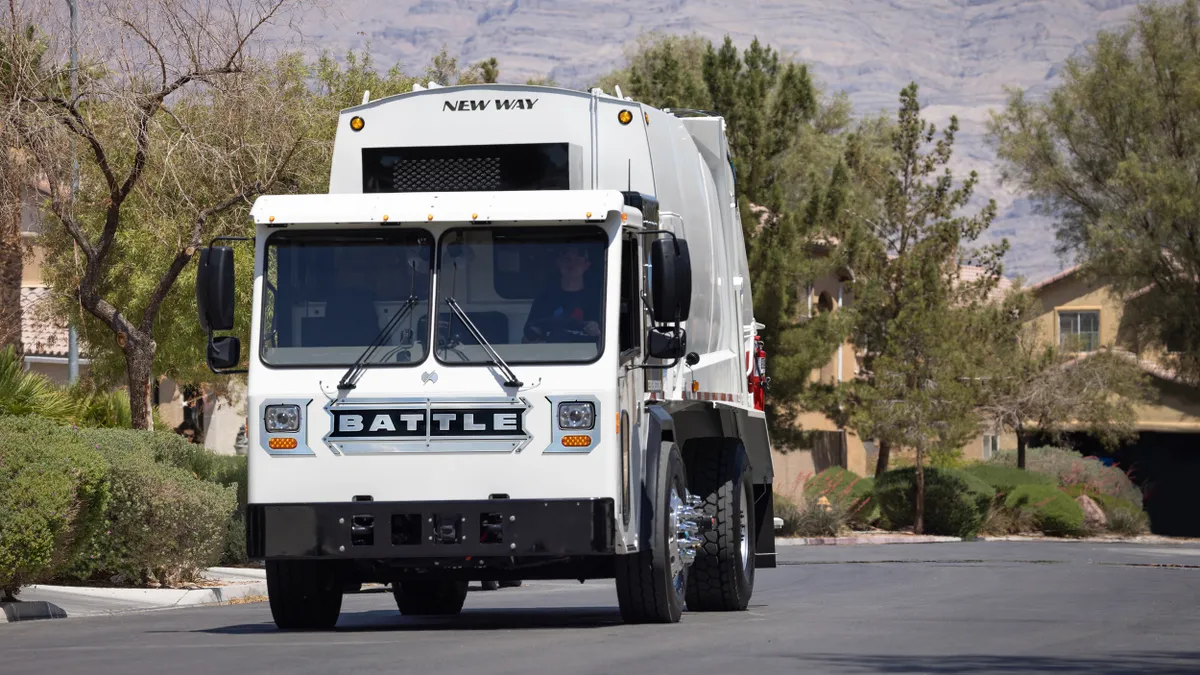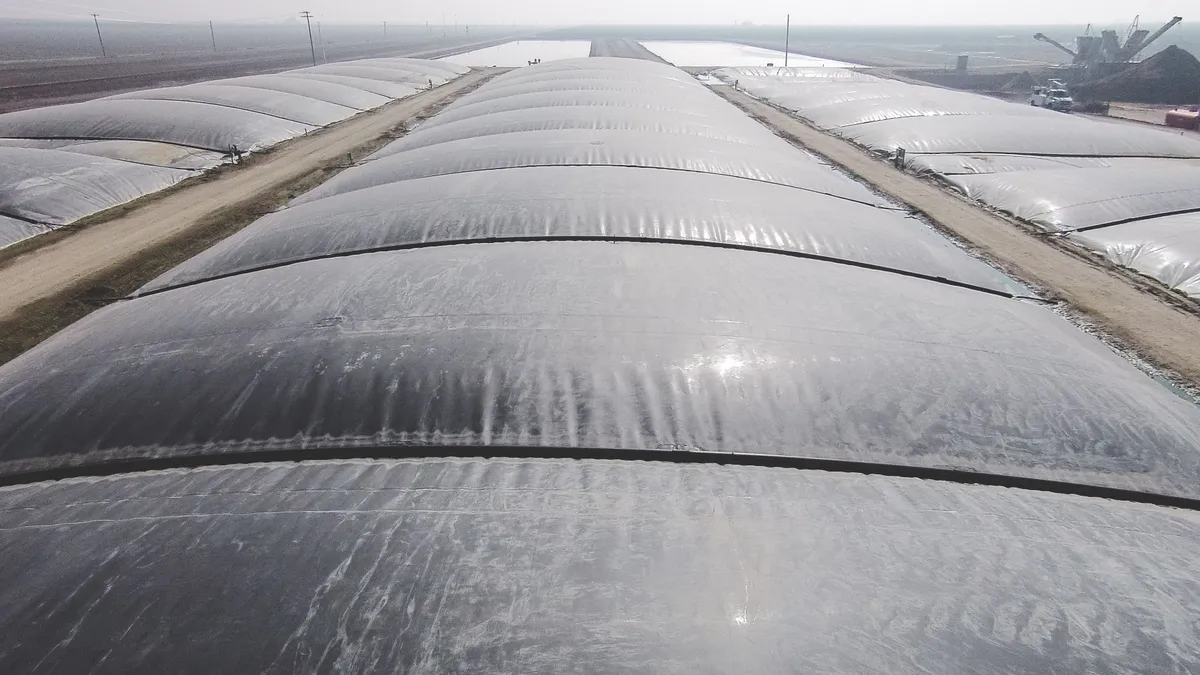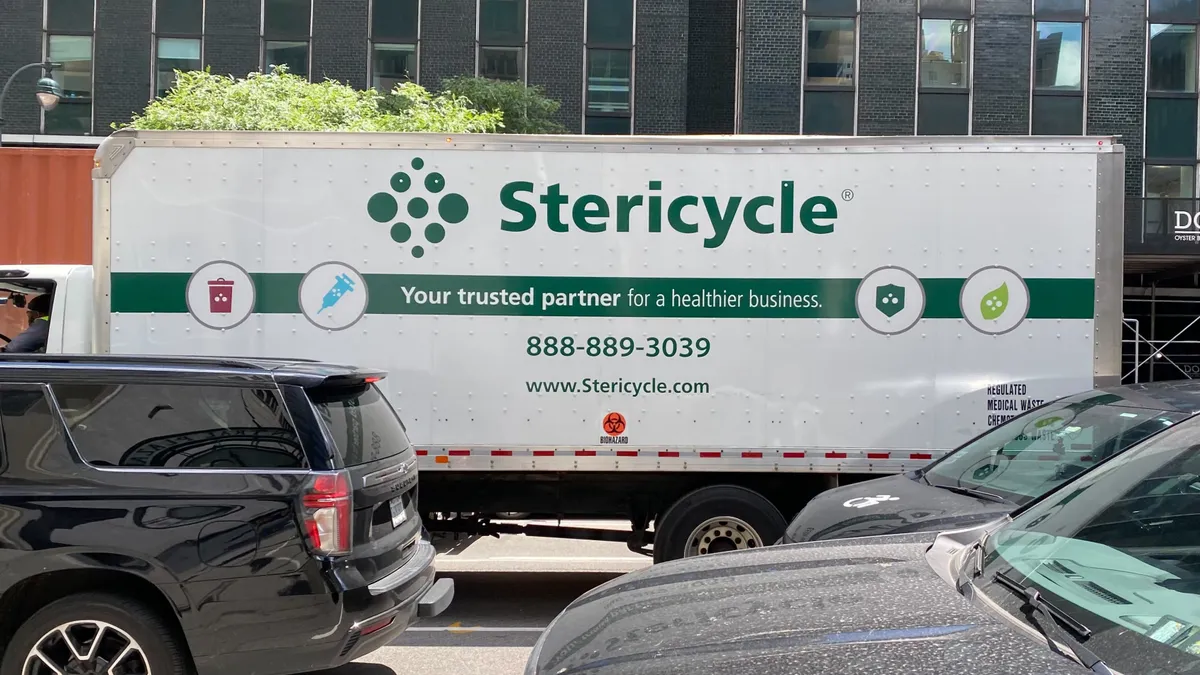Truck maker Battle Motors announced last week it raised a Series B investment round worth $150 million, building on a $120 million Series A announced last December.
The company said the new funds will help it expand production throughput to 16 trucks per day, much of that targeted in the refuse space. More sophisticated automated and robotic assembly lines are slated to help with orders. Next week the company is celebrating a ribbon-cutting as it expands a New Philadelphia, Ohio, factory from 125,000 to 325,000 square feet.
While its name may be newer in the waste and recycling industry, many of its relationships are not. Battle Motors was formed with the intent of acquiring Crane Carrier Company in 2021 and moving toward an electric future. Its CEO Mike Patterson previously founded battery startup Romeo Power, which was recently acquired by Nikola.
The waste industry currently accounts for nearly 90% of Battle’s business, according to Chief Revenue Officer Stan Mikalonis. Some customers in the sector include FCC Environmental Services and Waste Pro, plus the cities of Atlanta, Chicago and New York, as well as Tampa, Florida. Waste industry truck sales or orders are roughly 70% diesel, 29% compressed natural gas and less than 1% electric vehicles, though Battle is intent on electrification going forward. The company expects to produce between 1,000 and 1,200 refuse trucks this year.
Chief Technology Officer Kelleigh Ash shared more in an interview about Battle’s growth, relationships with customers and vision for electrification.
This interview has been edited for clarity and brevity.
WASTE DIVE: Battle describes itself as serving the “vocational truck industry.” How does waste figure into that mix? What are some of the company's ambitions as it relates to the waste industry?

KELLEIGH ASH: As far as Battle’s ambitions growing in the waste space: We definitely see the need for electric, obviously as different mandates are coming down the line, but also just to drive towards that zero emissions goal for all of us. And so we are proud to be working on several EV truck chassis specifically for the waste industry. We actually have one configuration that is in mass production already. And we have another one that is in R&D, final validation and demo status. We really want to be known as the total solution package for the waste space, both in [internal combustion engines] — diesel, CNG side — and also the electric side.
And being able to offer multiple different fuel types for the waste industry, depending on use case, is really what we're trying to accomplish. From my perspective, I would like the waste space to enjoy the technologies that the other utility vocations — such as dry van, reefer and beverage delivery — enjoy, and see that technology being infused in the waste space.
What did the transition look like from Crane to Battle, in terms of conversations with customers?
The Battle rebranding was really pushing electric, as far as having those conversations with customers and dealers.
That did open some new doors for us with customers, municipalities and dealers, but it really helped to lean back on the legacy of Crane Carrier Company and their 75 years of development experience … Customers told us verbatim ‘Hey, you're not just another startup. We love Crane Trucks. They've been doing it for a while. So you did it smart.’ So it did open some new doors for us.
As far as the customers and the product mix, that’s been varied. It's really depending on the states and the municipalities demanding it, and any mandates that are coming down the pike.
How do you balance wanting to maintain a relationship with Crane’s legacy customers who might not feel ready to go electric?
It's really just proving to them that we can be a one-stop shop for them. So yes, we offer electric but at the same time, most of that technology found in our electric trucks can also be offered — such as our digital dash — in the diesel and CNG space, and even other alternate fuel sources. And so it's really just relationship management and just proving, ‘Hey, we can literally build a truck for any need that you have. It just depends on what your needs are. So let's talk about those and let's help solve your uses and your problems together’ and be a solution provider for the customers.
Are there any common threads in terms of the types of trucks, technologies or features that customers are turning to you all for specifically?
It really depends on the fleet. Right now I think where we are able to shine is really just with our increased capacity from our expansion — tripling our manufacturing capacity in an environment and a market that we're in where everyone else in the space cannot achieve production because they're sold out for a year and a half.
In terms of limiting factors in the market right now, we've heard a lot about materials, supply chains, labor. This manufacturing expansion indicates that you'll be able to do a lot more, but are there still hampering factors that you’re seeing?
The market is the same no matter what you're manufacturing, so all of us are seeing those limiting factors. I can say the additional raise has helped us solve a lot of those ... we're able to have purchased components with longer lead times, meaning that even if there is a supply chain shortage on that component, we've ordered it in long enough lead time that we're not feeling the crunch as much. We've also been able to purchase additional equipment to integrate certain manufacturing processes and bring component manufacturing in-house where we previously had to purchase those outside. And so those changes are [likely to help us mitigate] some of those factors that we're seeing in the market.
Which components?
I’ll use the example of wiring harnesses: We're able to stand up making our own wiring harnesses in-house for certain applications very, very quickly ... whereas previously we had to purchase those.
Are there any common threads you're hearing across customers who are curious about the EV transition?
The number one hesitation, or I guess question, is range. Outside of municipalities and populated cities, it is really hard to have the range necessary. And the ability to add charging stations and things like that is typically the first objection that we hear.
What we are able to offer is: Technology in general has come far enough along that even with a fully-ladened refuse truck we are able to achieve some really great range and be able to provide solutions for [most of the municipal trucks] in the electric space. But the question still is, ‘okay, well, that's great that the truck can actually achieve our route, but what about charging stations and things like that?’ And we've heard some great manufacturers of charging stations that have been able to answer that question and provide solutions for those customers. But range and infrastructure is definitely the number one objection.
It’s been a few years now that people have been having this question about range, and it's not that things change overnight, but I'm curious if sentiment has moved along at all.
Yeah, it definitely has. And it doesn't change overnight, but the electric space in general, in heavy truck and automotive, in relation to the market overall is changing overnight. It's happening so, so fast in relation to the market overall. Even just in the past 24 months the market has changed. Municipalities, dealers and fleets have learned a lot in the space as it relates to infrastructure. New technologies are coming out every day that are solving problems, improving range, and it's been great to see.
There’s been a lot of advice that fleets interested in electric work with their utility immediately. Where does that stand?
I definitely do think that most of the customers, even if they are just in preliminary talks with us, have already reached out to the utility companies. It could have been that they started the conversation a couple of years ago. It could have been, ‘hey, we just reached out but they already provided a solution for us and they already presented their [charging plan.]’
So, I definitely think that they are getting a lot smarter in knowing that they have to reach out at the same time [or before.] I don't think that that is as much of a concern as it was just a few short years ago.



















